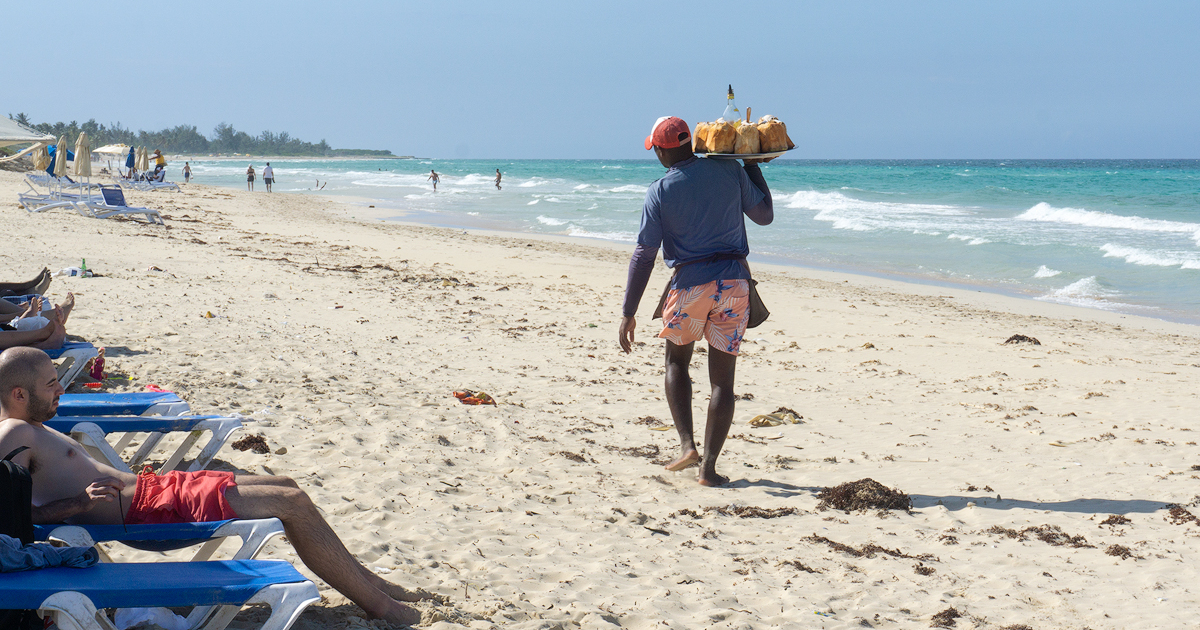
Despite the fact that the Cuban regime invests 14 times more in tourism than in public health and social assistance, the arrival of visitors is not increasing on the Island, which makes it difficult to achieve the goal of recovering pre-pandemic figures, as 4.2 million tourists visited the country in 2019. According to data published by the National Office of Statistics and Information (ONEI), Cuba recorded 1,905,644 travelers from January to July 2024, numbers that fall short of those recorded in the same period last year. In total, in the first seven months of this year, 15,263 fewer travelers arrived on the Island.
To be understood, Cuban authorities make a distinction between travelers (everyone who moves from one country to another) and foreign visitors. This means that the figure of 1.9 million travelers includes all the people who entered the country from another country and who are not necessarily tourists. In reality, the exact figure of tourists would be 1.4 million.
If this reasoning is accepted, of the 1.9 million travelers received, the majority are foreigners (1,463,097), but it is precisely international tourism that has declined the most from one year to the next. In total, the ONEI reports a decrease of 26,230 visitors from other countries. Initially, the Office of Statistics ranks Canadians, Cubans residing abroad, Russians, Americans, Germans, Mexicans, Spaniards, French, Argentines, Italians, and "others," in that order, among the top ten nationalities choosing Cuba for their vacations.
In any case, no matter how you look at it, the data from January to July is not good. Everything points to last month being bad for tourism since until June the figures, although adjusted, exceeded those recorded in 2023. In the first half of the year, 1.6 million travelers arrived on the Island (+18,845 compared to 2023).
By country, all decrease except for Russians (+141%), Mexicans, and Argentines, both with a 108% increase. In this way, from January to July of this year, 123,358 tourists from the Russian Federation entered Cuba (35,852 more than in the same period of 2023); 35,086 Mexicans (2,764 more), and 28,978 Argentines (2,319 more).
If the number of Russian tourists arriving in Cuba remains stable, the goal of exceeding 200,000 visitors of this nationality could be achieved this year. To this end, the island's authorities have been negotiating with airlines to increase the number of flights from Russia. They plan to attract investors and hotel companies from that country to the Cuban tourism sector.
Although Canada remains the main source of tourists to the Island, a year-on-year decrease of 7,911 visitors has been noted this year. This might be due to the warning issued by the Canadian Government regarding the risks of vacationing in Cuba. Authorities from the main country of origin for tourists recommended to "exercise extreme caution" due to the increase in violence and crime, the scarcity of essential items such as food, medicine, and fuel, and the deterioration of hotel infrastructures.
In the same way, Cuban residents abroad remain the second largest client of the Island's tourism market, but this year they have recorded a significant drop of 30,280 visitors.
The Spanish market has also decreased significantly with 11,797 fewer tourists, making it, in fact, the second largest drop. Following it is Italy, with 5,520 fewer travelers in the same period last year.
In the following table, which for obvious reasons the ONEI does not compare with 2019, the pre-pandemic data with which the recovery in the arrival of tourists can be measured, it can be seen that the weakest month of the year was June with 134,948 international tourists arriving in Cuba. The best figure corresponds to March, coinciding with the Easter holidays, which attracted 281,139 tourists to the Island.
In addition, according to the chart, the data for the high season (first quarter of the year) surpassed those recorded last year, so the decline has occurred mainly between April and July.
The Oropouche epidemic is also not helping to attract tourism to the Island. This August, U.S. health authorities issued a level 2 advisory for the Oropouche virus in Cuba and recommended that pregnant women not travel to the country. Despite the lack of transparency from the Ministry of Public Health, data on fatalities due to complications have leaked through social media. Thus, CiberCuba gained access to the testimony of a father who lost his 3-year-old daughter to an infection complicated by meningitis.
Complaints like that of the Argentine TikToker Georgi also don't help, who this month reported the poor conditions at an All-Inclusive hotel in Varadero, where the food buffet lacked variety, the pizza had no cheese, and the breads were "like a rock."
This week, the Cuban Yanelys González filed a complaint for the theft of 70,000 Cuban pesos hidden in her luggage while staying at the Grand Memories Santa Maria hotel in Villa Clara.
What do you think?
COMMENTFiled under: